 |
|||||||||||||
|
 |
|||||||||||||
|
A few weeks before the start of the spring semester, I was searching through LoboWeb for potential classes to take. I recalled reading an email that Maggie had sent out through the UNMBIO server that had mentioned a class called Discovery and Innovation that she was going to be teaching in the spring. I could not remember all the details of the email, which had included a brief description of the class and so I decided to drop by Maggie's office. My intent was to inquire about the class format and general questions that I had about the course. As luck would have it, Maggie was in her office and we briefly discussed aspects of the class. She then instructed me to talk with Paul, who would be co-teaching the course with her. In short, I had a good talk with Paul and he directed me to a few books that we would be required to for the course. Paul mentioned that there would be a class project and a pitch at the end of the semester. I was not entirely sure what an individual in the class would be expected to produce and turn in for a grade, but in general the course did sound intriguing. The books that would be a requirement for the course also sounded like they would be interesting and a little different than the types of books that I normally read. The information that I received from Maggie and Paul interested me enough that I felt this would be a good course as a part of my graduate coursework.
I must admit that I was a little fearful of taking the course initially, because I know that Maggie challenges individuals in ways that they are not accustomed to. I had known Maggie for a few years prior to taking this course, as I was one of her students in the Initiative to Maximize Student Diversity program (IMSD). I knew from my experience of being in IMSD that it is not enough just to show up and do the work. Maggie really wants you to bring everything to the table and for you to give 110 percent at all times. She is not trying to make your life more difficult; she just wants students to reach their full potential. If you are willing to work hard and give it your best, then she will put the same amount of energy back in to helping you. I did not know Paul prior to our brief introduction before the start of the semester; however, it was clear that he had a lot of energy. Knowing that I would be in good hands, I put my initial fears aside and signed up for the course. A class taught by strong personalities, that are dissimilar to one another, would surely make for a great semester.
In the first paragraph of my class notebook, literally the first sentence, I had written down that the first draft of our class project was due in a week. My notes indicated that we needed to come up with a lot of ideas because not all ideas turn out to be good ones. Throughout the semester I learned that the prior statement could not be truer. In addition, we were told to be careful about the mental blocks that we would run into and to look at the class website for inspiration if we were having difficulties forming ideas. What? A first draft of our class project is due in a week? The project needs to be something innovative and creative? These were the types of questions that were running through my mind in the first 30 minutes of that class. I have never used the word creative to describe myself and I do not recall others using this word in reference to me. Anyone who has seen the color that I chose to paint my babies room could attest to the fact that I may lack creativity on occasion. The fear immediately returned and I silently wondered if Discovery and Innovation was the right course for me. The issue was not that I was lazy and did feel like working on coursework during the first week of classes. The genuine concern was that I would not be able to come up with something that was innovative and creative in such a short period of time or that my ideas would be mediocre. The task being asked of me initially brought me out of my comfort zone that I have become accustomed to. Normally a question is asked of me and then I find information that addresses the question, but here we were asked to come up with ideas that could pertain to anything. As we progressed through the first class my fears gradually subsided as we learned about System 1 and System 2. Maybe it was my reptilian brain in System 1 immediately telling me that I should distance myself from the situation, I was feeling the resistance. The response that I was feeling was an immediate and deliberate emotional response to the situation. What I needed to do was take my mind to System 2 and consciously apply reason to work through the problem and realize that I too can be creative.
Before I discuss what I learned from reading Conceptual Blockbusting and Linchpin, I am going to write about some of the initial project ideas that I had and why they did not develop into a working project. The reason why I want to convey this information is because I had a lot of difficulty throughout the semester coming up with a class project. For me it was difficult developing a creative idea for a project that I would want to put myself into and work long hours on. What I mean by that is that it is difficult to work on a project that you are not emotionally invested in, as was the case with some of my initial project ideas. I think one of the big issues for me was that I could not work on something that only existed in my head as a concept. I had to be able to test the product or idea and not just imagine and describe my vision of the idea. That is why I thought the sage bag and WriteRight marker were such neat ideas; they were something that you could hold in your hand. I am not so naïve as to believe that ideas are immediately imagined and then put into a working project or prototype. I realize that many great projects may have started out on a piece of paper or were just discussed for years before a working concept could be realized. It is just that I wanted to develop something that I felt was realistic and I could put forth at the end of the semester. Looking back at everything that I learned throughout the semester, I can see now that this hindered my development of a class project. Basically, this type of thinking is an imagination roadblock that I am attempting to move past in my daily life. Instead of limiting my imagination and thought process, I should just take a step back and look at the entire problem. Maybe a solution to the problem is not as far fetched as I imagine and that there may even be a simple solution. If I immediately say that an idea is not worth perusing, maybe for monetary reasons, a great idea may suddenly vanish.
Briefly now I will discuss a few initial project ideas that I had that I rejected for various reasons. Maybe I might even get another idea by looking back on these projects or see something that I missed the first time around. An initial idea for a project was to require that all households incorporate motion sensors into household sinks. The aim of this project was to reduce water consumption, especially in arid regions of the US. The issue with this project was that it was not innovative and basically would require policy change. Further analyses of this issue would have been to examine buildings that have implemented motion detectors into sinks and investigate how much water they save. Maybe a better idea would have been to investigate if any types of institutions have implemented this type of technology and if it reduced the spread of disease. Another project idea was to design a medicine disposal device for use in the medical industry. Hospitals often dispose of medicine improperly and these chemicals may find their way into the environment. The aim of this project was to design a machine that safely destroys unused medicines before they find their way into aquatic systems. This project proposal originated from personal contacts that I have had with individuals that work in a medical field. These individuals have told me that there is no official policy on how to dispose of unused or expired medicine. Hospital workers are often instructed to throw unused medicine into the trash, while some home health care workers are told to flush unused medicines down the toilet. This is somewhat alarming considering that treated water is often discharged back into aquatic systems. I still find this idea interesting and I feel that I could have developed this idea into a working project. However, I would have approached the issue from a different angle. For example, I would have visited several hospitals, or attempted to interview many heath care workers, in order to shed light on current hospital policies and educational programs concerning the issue. By better understanding the scope of the problem I could have explored different ways to approach the issue. Maybe the solution would have been a policy change that advocated for educating medical care workers about the proper disposal of medicines.
The project that I chose to develop had to do with human-elephant conflict (HEC) reduction. The issue was that human encroachment into traditional elephant habitats has resulted in more encounters with wild elephants. The result of which has been death of villagers, destroyed croplands, and, as a consequence, death of elephants. In response, I thought that it might be useful to investigate if a Long range Acoustic Device (LRAD) could be used to discourage elephants entering villages and farmland. Looking back I now I can see how I immediately came up with a potential solution to the problem without understanding all of the underlying factors. The human-elephant conflict is a big problem that can very drastically from region to region. Primarily my initial investigation involved me searching through the primary literature for some well-cited manuscripts pertaining to this issue, as well as current news articles. The news articles all shared a common theme, which explained that demand from Middle Eastern and Asian countries are fueling the poaching of elephants; in particular China. In response to the growing demand for ivory in Asian countries, I attempted to graph the quantity of elephants left in each Asian country versus the GDP per capita of the respected country, but I did not see any obvious trends. I should have also graphed this same type of information from data pertaining to African countries, but I never did. I also looked at sites like Save the Elephants and the Elephant Nature Foundation for ideas and information. The reason why I never developed this project is because the issue seemed disconcerting and I essentially lost interest in the project. This issue is very complex and when you take into consideration that every region has its own unique set of circumstances, the reality of the situation seems overwhelming. Looking at what the various elephant rescue groups were doing I felt that I did not have a lot to bring to the table. I feel this is an issue that you would have to immerse yourself into just to understand the gravity of the situation, if you are to remedy a potential solution.
Before I take you through my epic thrashing, I would first like to share with the reader what I got out of Linchpin and Conceptual Blockbusting. There is no question that I enjoyed Conceptual Blockbusting more than I enjoyed Linchpin. I think that Seth Godin, the author of Linchpin, had a strong message, but I feel that he repeats himself too much. By the end of the book I was sick of hearing the words linchpin and indispensable; I get it already. Besides this though, he did have a strong message. I found it particular interesting when he discusses the fact that the American Dream has changed drastically from what it once was. The following is the old American Dream taken from Linchpin:
"Keep your head down"
"Follow instructions"
"Show up on time"
"Work hard"
"Suck it up"
"...you will be rewarded."
The world is no longer the same place and these old rules no do not exactly apply anymore. Godin describes the new American Dream as follows:
"Be remarkable"
"Be generous"
"Create art"
"Make judgment calls"
"Connect people and ideas".
His message here and throughout the book resonated with me. I understand you really have to make yourself standout in the modern American workforce. When I graduated with my B.S. in Biology last fall and saw how many individuals were also graduating with a biology degree, I realized how important it is to stand out. You have to convince your employer that you are invaluable to the company and it would be extremely difficult to replace you. Individuals in the modern workforce that are not considered valuable may be replaced when a company like Bain Capital comes in and starts to downsize. Overall the book was a good read and carried a strong message.
My favorite of the two books was Conceptual Blockbusting and I really enjoyed some of the mind exercises in the beginning of the book. I find myself a lot of the time jumping to a solution, rather than looking at the whole problem. Something that I took away from the book is to take a step back from the problem and look at the whole picture. I am going to apply this to my research and see what benefits I get out of approaching problems differently.
Two of the exercises I found to be particular useful to myself. One of the exercises is found on page 48 and it addresses the problem with emotional blocks. The author defines 6 emotional blocks that we often run into as follows:
"1. Fear to make a mistake, to fail, to risk"
"2. Inability to tolerate ambiguity; overriding desires for security, order; "no appetite for chaos"
"3. Preference for judging ideas, rather than generating them"
"4. Inability to relax, incubate, and "sleep on it"
"5. Lack of challenge (problem fails to engage interest) versus excessive zeal (overmotivation to succeed quickly)"
"6. Inability to distinguish reality from fantasy"
I have been guilty of numbers one, three, and six on more than one occasion. As we discussed throughout the semester, students are very worried to give a wrong answer to a question. This really resonates with number one because it gets instilled in our minds from an early childhood that if we risk answering a question and get it wrong, our instructors and peers may ridicule us. I cannot even count how many times that I knew the answer to a question or had a question that I did not ask out of fear. This way of thinking may be so imbedded into our psyche that we are unaware how much this emotional block encumbers us throughout our adult lives. Another trait that holds a lot of people back is judging others ideas when we ourselves have none. I am very quick to discredit the ideas of others if I feel that their vision is not the same as mine. Maybe I should take a step back and try to understand what they are trying to convey, I could probably learn something from the person that I myself did not imagine. Finally, number six is an important emotional block that people should be aware of. Of course it is great to use your imagination and picture endless possibilities, but there is also a time when you must discipline yourself with the reality of the situation. For example, Pablo mentioned that there is a point when you must realize that you have failed and its time to walk away. He was referring to individuals that refuse to give up on a failed business model.
The last feature from Conceptual Blockbusting that I wanted to discuss is from a problem solving exercise on page 25. The exercise was as follows:
"Think of a problem that is bothering you. State you problem in writing as concisely as you can. Can you think of alternative problem statements that might be causing the difficulties you are experiencing? If so, write them down and conjecture about the possible differences in solutions that occur to you."
The reason why this exercise interested me so much is because I have a serious problem with time management. I am not trying to approach this problem by saying how difficult my life is or anything like that. What I am saying is that being a graduate student that TAs and takes three courses a semester has its challenges, especially when I also have a two-year-old son. The course work is not the issue; rather attending to an attention-starved toddler that is constantly doing something crazy makes getting homework done difficult. Not only do I usually have homework to do when I get home or articles to read, but I also have domestic home responsibilities as well. Here is what I came up with that added to my difficulties:
I only buy a few things from the store when I go shopping because I am always in hurry. This results in numerous trips to the store for various items that are needed on a daily basis.
I often waste my time at school by reading the newspaper of looking at online news or various websites.
When Kurt is taking a nap or preoccupied playing, I often do not make the most out of this time.
Here are the solutions to the problems that I came up with:
Time Management! I need to focus on getting as much done during the day so that I do not have as much to do when I get home.
Also focus when I am at home.
Go shopping only once a week.
This simple exercise actually did help with my time management issues. One of the first things I did was cancel the Albuquerque Journal, which gave me more time in the mornings to focus on course work or lab work. I also made a rule with myself that I have to get a certain amount of work done before I will connect my computer to the Internet. Although there is room for improvement, these little changes have allowed me to be more productive and spend more time with my son.
This semester I had difficulty coming up with a project that I felt was interesting and most of all creative. The word creativity drove my thought processes as I desperately sat around trying to think of an idea for a class project. This occurred after I abandoned my human-elephant conflict project early on. Now in retrospect I can see that I held on to the project too long after my subconscious had abandoned the issue. I desperately sat around trying to think of a project, later using Google to come up with ideas, and even asking for input from people I work with. Vinod Khosla gave me the notion that you could "steal" others ideas. Of course he was not actually saying that he literally steals ideas from others, nor was I attempting do this. I just wanted an idea that I thought I could expand on and make my own or work with someone else on. Anyone whom has ever searched the Internet for creative ideas realizes that there are some strange notions that people are putting forth online. Call me cynical, but some of the creativity I ran across online was either impractical or bizarre. I never did run across something that I thought I wanted to develop further. I would imagine that most individuals that have a creative idea do not offer it for free online. I found it very interesting asking those around me for creative project ideas, even though I did use any of their ideas. One theme that I found is that everyone thought that their idea was the best and there was some creativity that was put forth. Daily my coworkers and my wife would ask if I had come up with my project yet. Day after day I offered the same answer, no. This would usually be met with a comment asking why I had not pursued the ideas that they had given me for potential projects.
I finally decided that I would attempt to come up with a project that would have some benefit to the research that I conduct. In the field, one of the things that we like to do is take a photograph of every sample that we collect so that we have a physical image that we can attach to our survey data and such. Of course it is always a good idea to take good notes in the field because you do not want any ambiguity later; however, I thought it would be neat if you could attach digital information with a photo. For example, the image could contain information that pertained to when and where the image was taken, as well as who took the image. In addition, the user would be able to add in any extra information that they thought would be important to know later. This idea then evolved into a photo sharing community website. I envisioned individuals taking a picture of a restaurant that they thought was amazing or a waterfall they found while hiking and uploading this onto a photo sharing website. Attached to the image would have been GPS coordinates so that others could easily find the location where the image was taken. Individuals in the photo sharing community could choose to publicly share there images publicly or just give specific individuals access to their albums if they wanted. I also thought that people would appreciate this type of website because they could go back to a photo decades later and have information pertaining to the history of the image.
However, this project quickly derailed as I discovered that there are many similar applications and websites already out there. If I had only bothered to turn on photos in the location services menu on my iphone, I could have already been using this amazing feature. There is also a free photo sharing website called flickr that shares many of the same aspects that I had envisioned. The following is taken directly from the flickr website tour:
"Tell a story with your photo.
Include rich descriptions such as titles, tags, location, people and more to give your photo context and a life of its own.
Share your photos with the people who matter to you.
Share your world with family & friends through your photos. Have a conversation through comments, faves, notes and more on your Flickr photos.
Your photos will love it here!
Flickr's elegant interface and tools help you to organize and display your photos the way you want to."
I was far too late, someone had already thought of this great idea years before I ever did. At this point I was feeling completely overwhelmed that I may never come up with a creative idea for my class project. It seemed that someone else had already thought of all the ideas that I was coming up with. I had at least five ideas that I thought were unique, until I performed a Google search. It was not until I was in a discussion section that I began to form ideas into a working project. Maggie had me write down a bug list on the board, which I wrote time and money. This is not exactly a distinctive situation among most students and so we focused on the positive aspects in my life, which is my son. I am not exactly sure how it happened, but this evolved into me writing a children's book. Earlier in the semester my mentor had mentioned that she would us to make an effort to communicate science to the public. Particularly, she thought it would be useful if we focused our attention on getting children excited about science. At one of our lab meetings she showed us a fiction book, which I believe was written in the 1930s, about a cartoon microbe that goes on various adventures. Initially, I was going to write a book from a similar approach; however, Maggie and Paul suggested that I keep the content more real. Paul directed me to an application offered for free on the mac store called iBook's author. Basically, it is a user-friendly application that allows anyone to creative an interactive textbook. However, there are numerous books online where individuals have used the software to create children's books. The only problem with the application is that Apple does not allow you to change certain features, so it would be useful to know how to write computer code if you wanted more control over design features.
The following was my product pitch:
Did you know that the 2010 high school graduation rate in New Mexico was only 67.3%? In fact, 20% of New Mexicans 16 and older fall into the lowest literacy skill level. Sadly, individuals at this reading level have difficulty with everyday tasks, are nearly 10 times as likely to live below the poverty line, and are more likely to end up incarcerated. Hello, I am Jason Kimble, a concerned citizen and a father of a two-year-old son. Today I want to tell you about a computer program called iBook's author that Apple offers for free on the Mac App store. This user-friendly app allows anyone to easily create an interactive book, which may include images, video, and more. I propose that together we form a community where we write books directed at children and that we offer these books for free on the iBookstore. This would allow anyone registered with iBook's to freely download the reading material. There is creativity in each and every one of us, imagine what we can learn from each other. I envision reading a book to my son written by a member of one of the pueblo communities and others reading about my book about caves. Together we can increase the level of literacy in this state, ultimately bettering lives of New Mexicans.
Originally I had intended to write a children's book about caves aimed at Kindergarteners. I sent out a survey to instructors that teach this age group in order to find out what types of books their students are most receptive to and also to determine the appropriate amount of content. What I found was that children in this age group prefer books that rhyme, have a lot of pictures, and have no more than 3-5 sentences per page. The problem that I came across right away was that most of the images involving caves that I personally own or have access to were more serious in nature. In addition, I did not have any video footage in caves that would work for the book. The closest caves to Albuquerque are found in El Malpais National Monument, but I just did not have the time required to go out this location. In addition, the closure of most New Mexico caves because of White Nose Syndrome would make getting a permit difficult. What I chose to do instead was design a book focused at children 9 months to 2 years old. The reason why I chose this age group is because I am familiar with the content that goes into these types of books. I feel that parents would be receptive to my book and more importantly, their children would. My wife seemed to really like the book, as did the parent of a 2 year old that I share an office with. I do not know if my project counts as being original or creative but I feel I learned a lot from it. I hope others come across my book on iBook's and that they too get enjoyment out of it.
 |
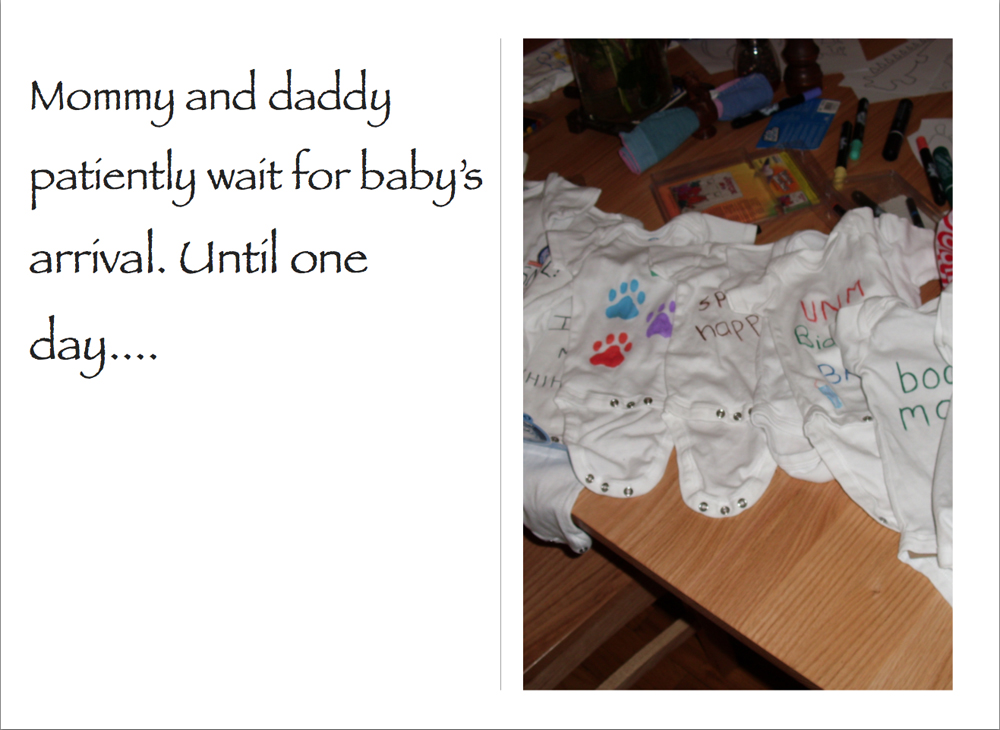 |
 |
 |
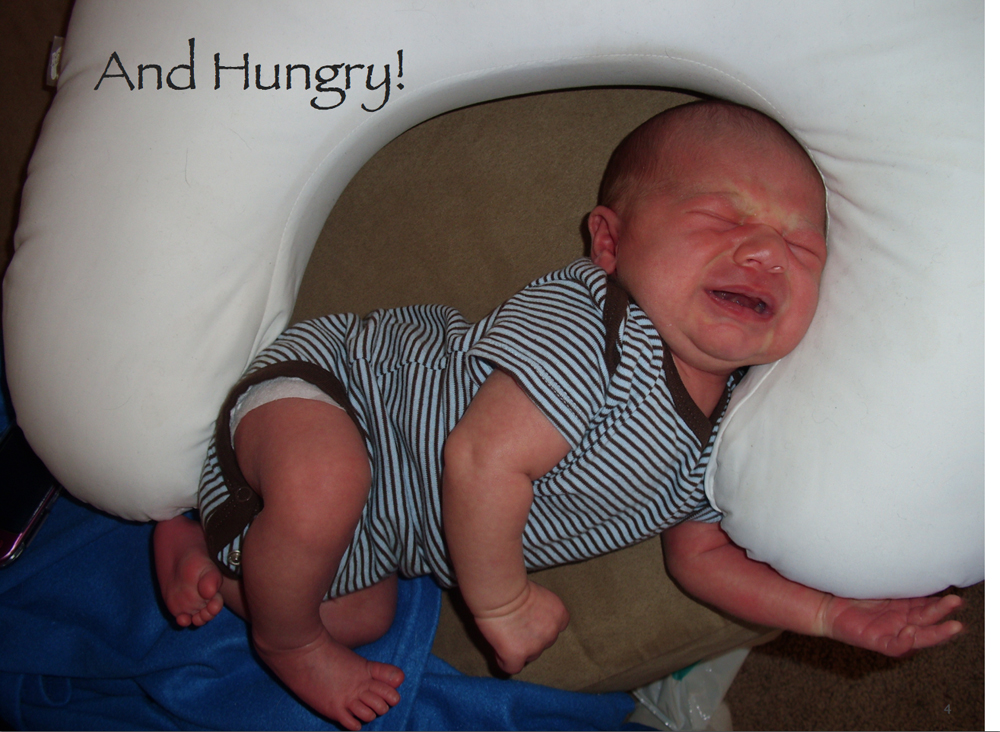 |
 |
 |
 |
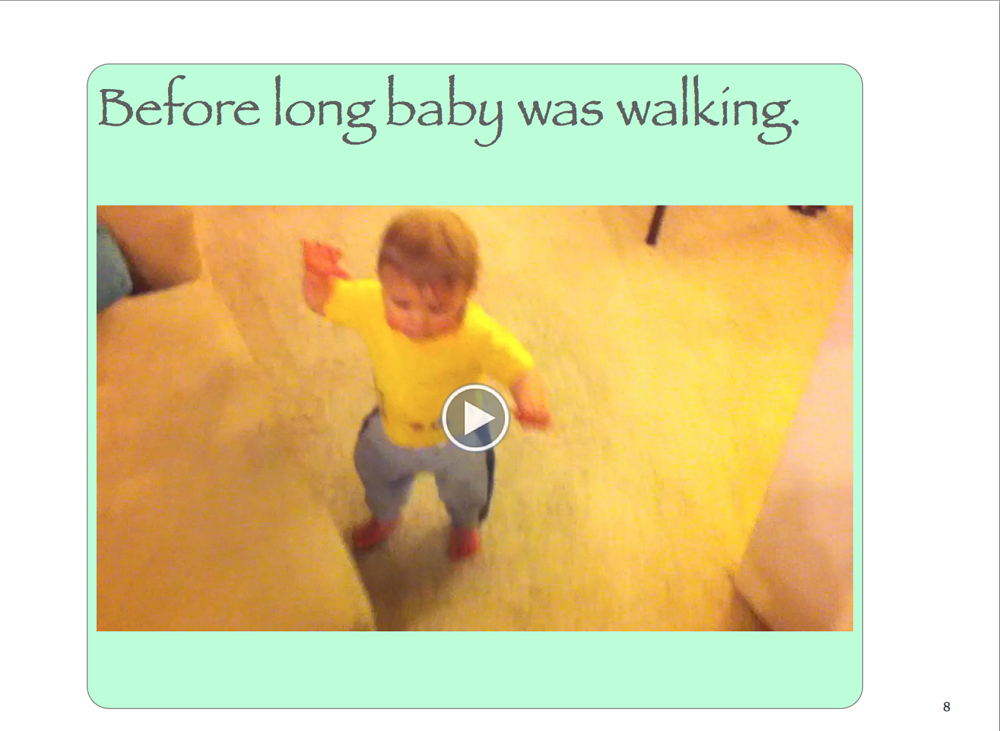 |
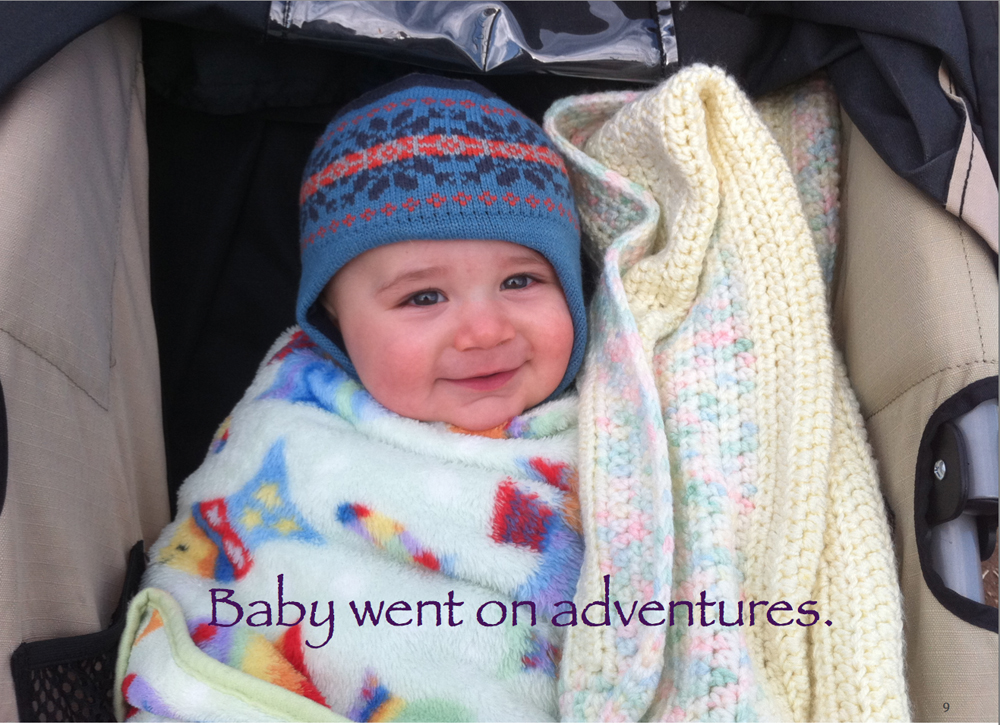 |
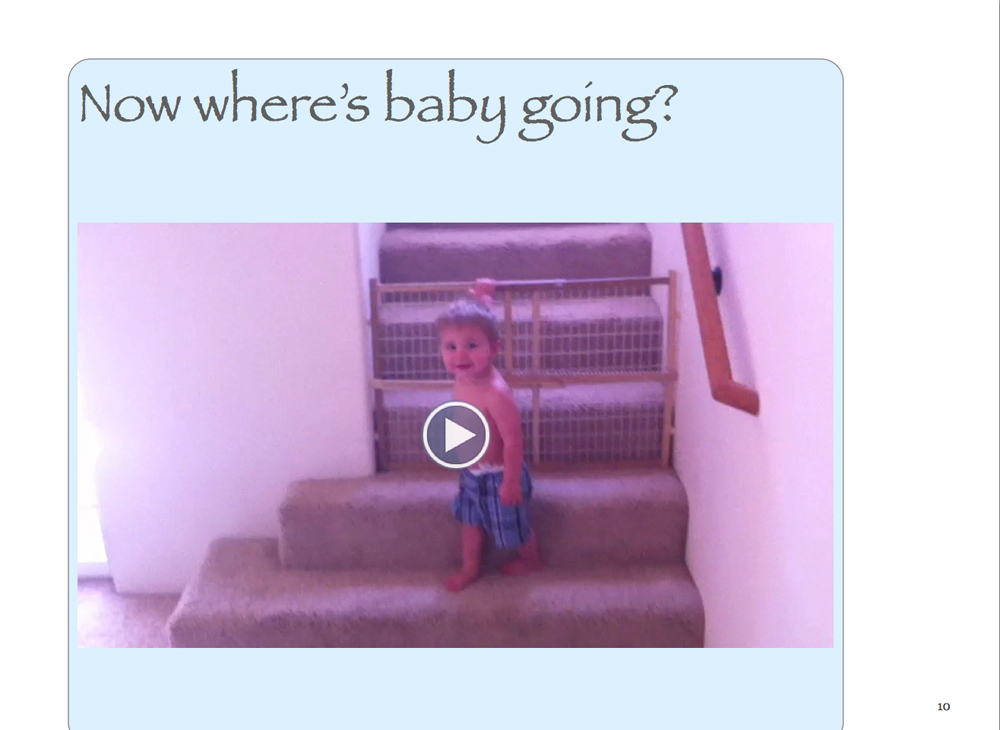 |
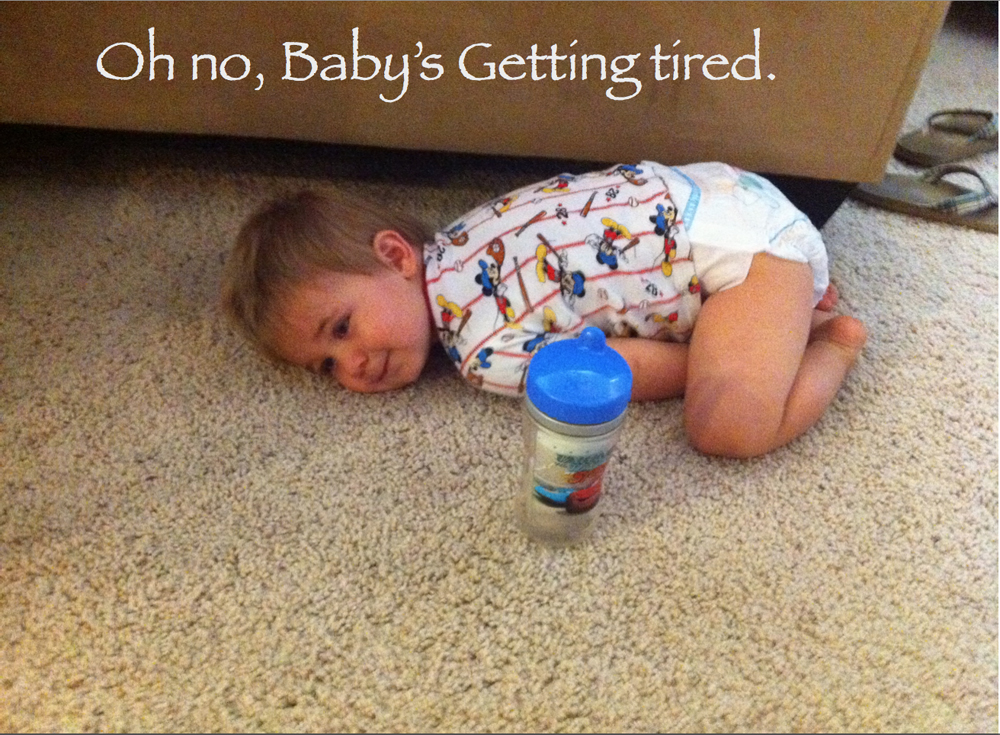 |
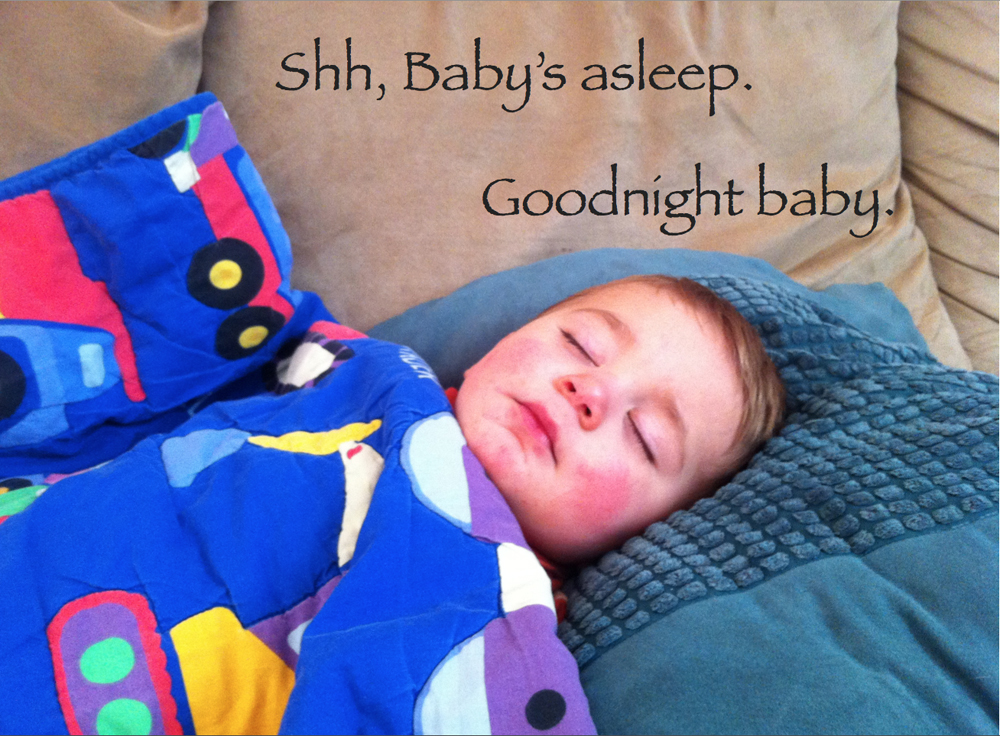 |